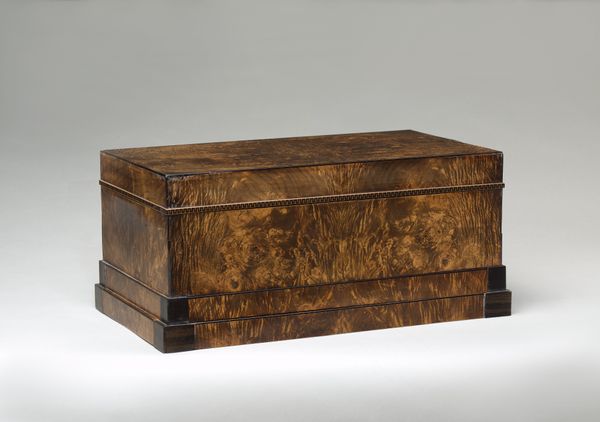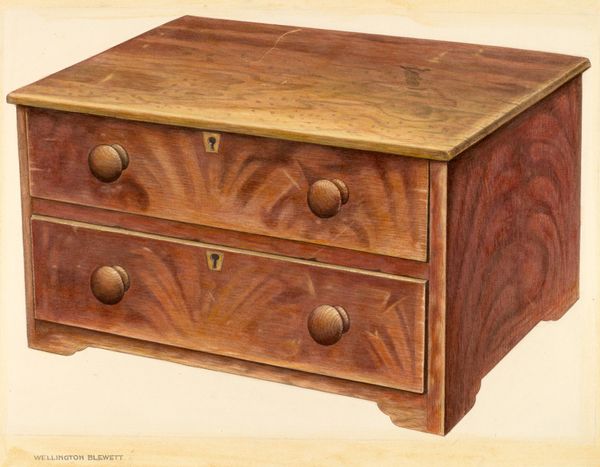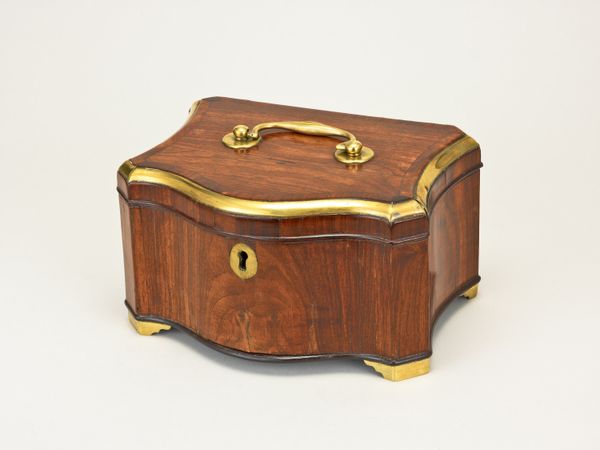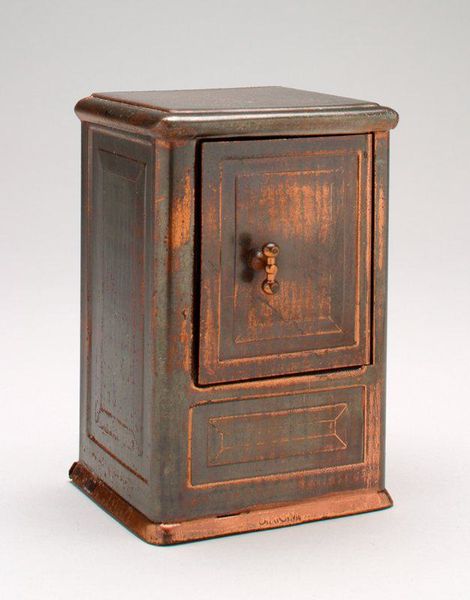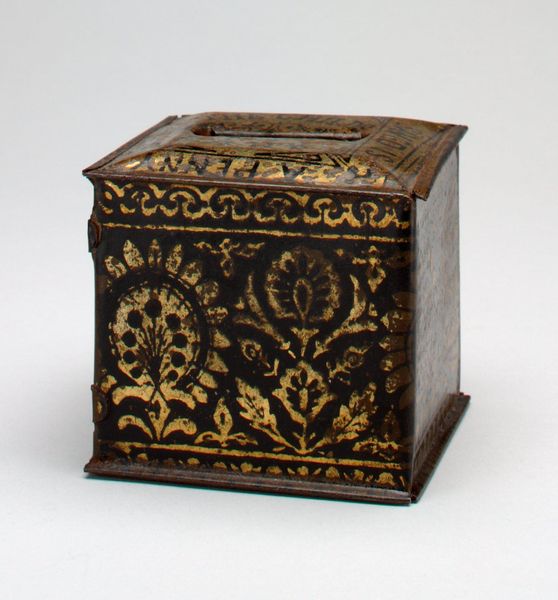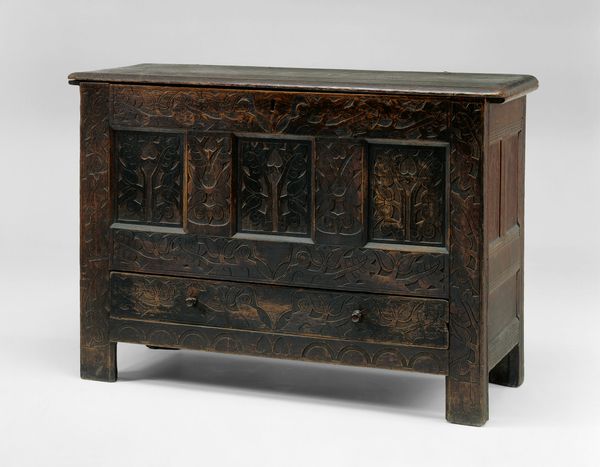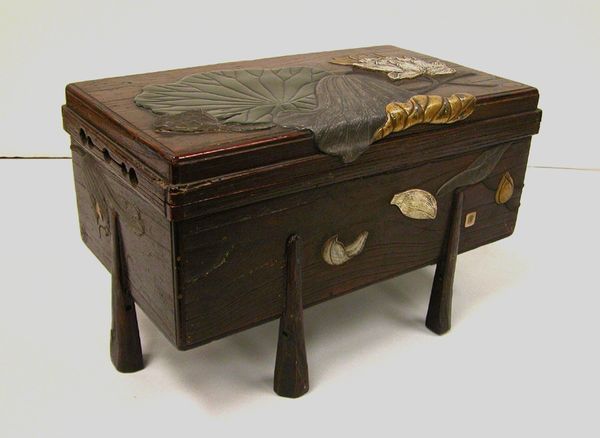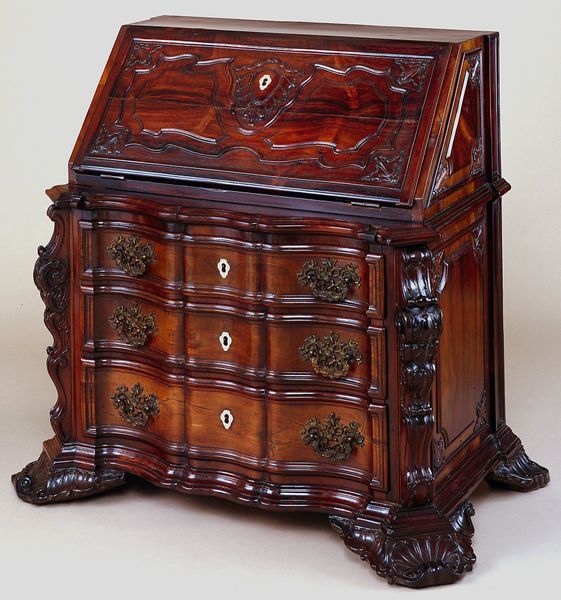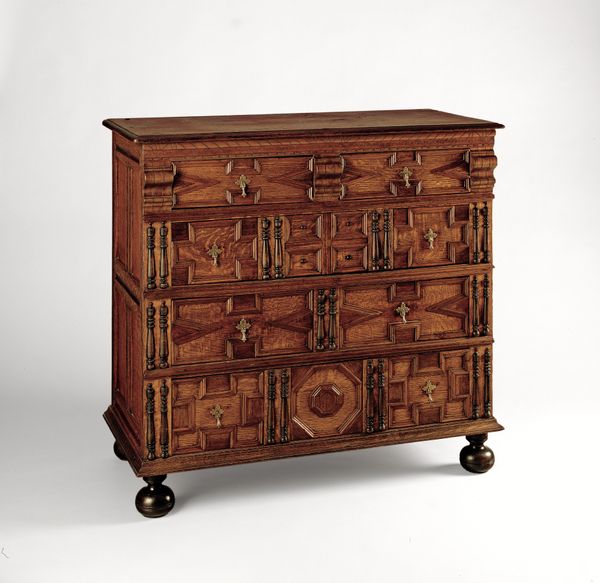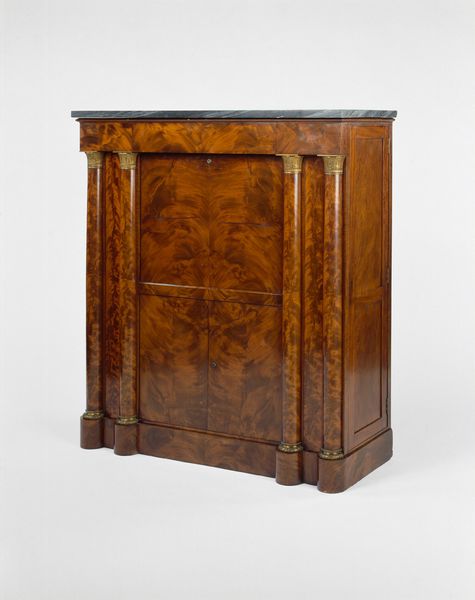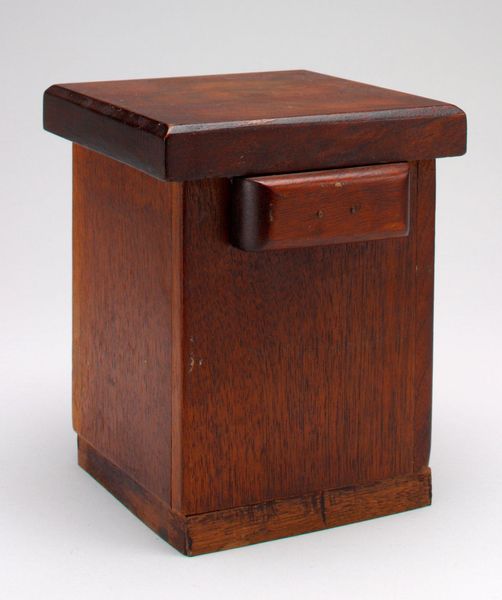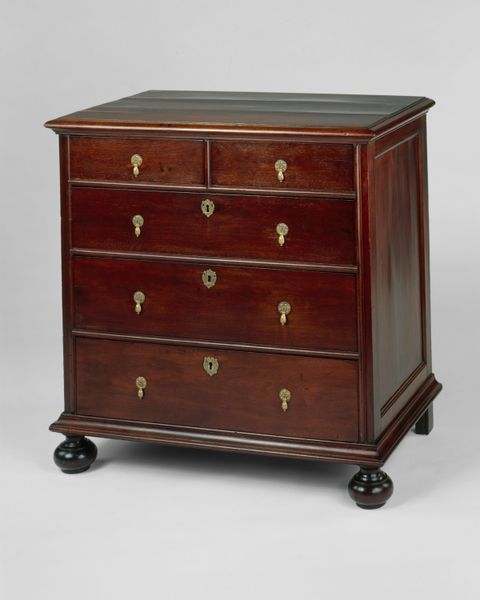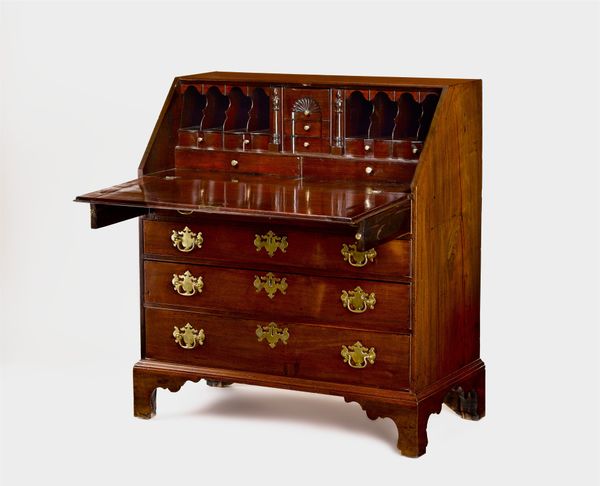
ceramic, earthenware, sculpture
#
sculpture
#
ceramic
#
figuration
#
earthenware
#
sculpture
#
ceramic
#
earthenware
#
decorative-art
Dimensions: 2 3/4 x 3 x 2 1/4 in. (6.99 x 7.62 x 5.72 cm)
Copyright: Public Domain
Curator: What a curious piece. This is a ceramic still bank in the form of a chest of drawers, dating back to around 1850. It's currently held in the collection of the Minneapolis Institute of Art. Editor: It has such a quaint, comforting quality. That smooth, almost viscous, brown glaze gives it a slightly nostalgic feel, and the exaggeratedly simple design evokes a very specific, homespun sort of craftsmanship. Curator: The ceramic, most likely earthenware, gives it a grounding connection to the earth, to folk traditions. A child putting coins into this isn't just saving money, but is participating in something handed down through generations—a tradition of thrift and preparation for the future, yes, but also perhaps tapping into the symbolism of accumulation itself, of security, stability and growth. Editor: Looking more closely at its formal composition, that vertical thrust provided by those molded drawer fronts clashes productively against the squarishness. The slight bulge or distortion amplifies this divergence even further—giving this static box the energy of vertical motion against horizontal confinement, even while echoing the solid immobility of a treasure chest. Curator: Yes, and the object itself, while representing a familiar item—a chest of drawers—becomes something more. It transcends the purely functional. It embodies aspirations and speaks to the dreams of its owner. You can imagine how important these objects would have been at one time—placed where family can observe and encourage habits of discipline in their children. Editor: And the glazing seems haphazard, a near monochrome gradient streaking unevenly to reinforce those simplified geometrical volumes, giving it all a softened, slightly melting look…it has a touch of Surrealism despite its overt functionality. Curator: Precisely! Its function merges with artistic expression and speaks to societal values around money. These symbols give us a glimpse into cultural values. That kind of direct, uncomplicated form helps it remain accessible—the bank becomes an inviting symbol rather than a forbidding idol. Editor: I agree, it has become far more compelling through considering its original and continued effect across time. I found myself focusing initially on these basic elements, its surface. Curator: Indeed! It has encouraged us to notice that even a humble, functional form reveals much about material culture!
Comments
No comments
Be the first to comment and join the conversation on the ultimate creative platform.
